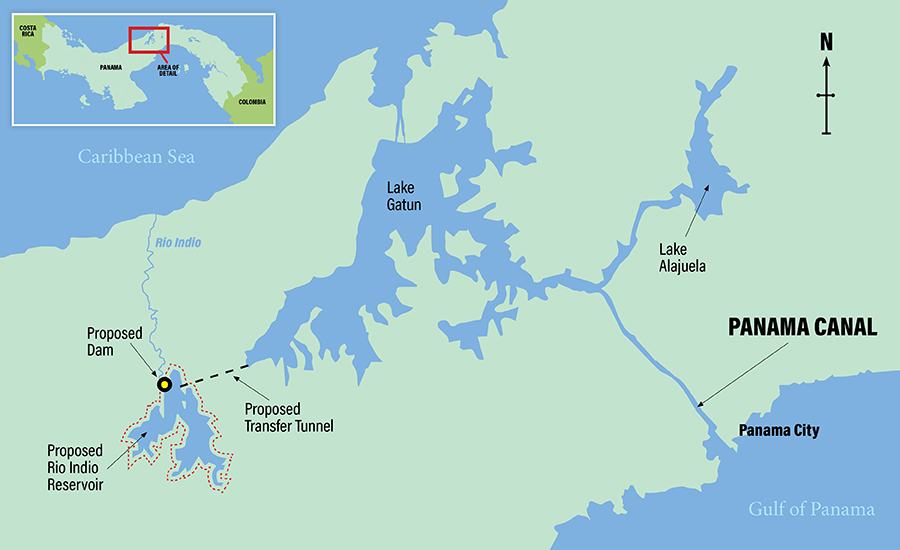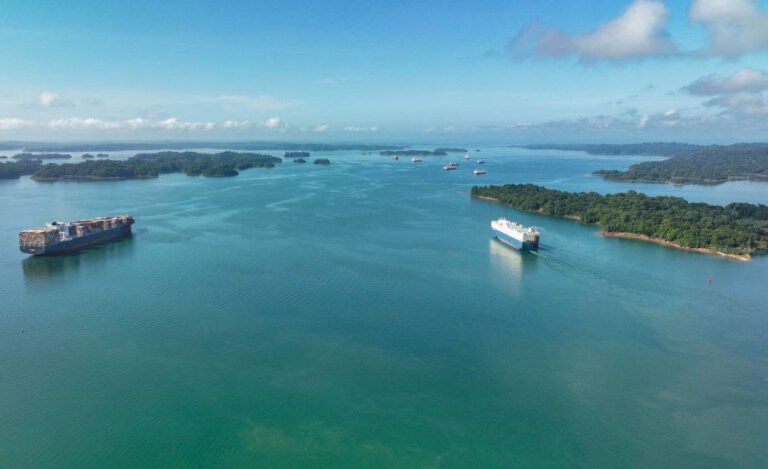Panama’s highest court on July 2 invalidated a law blocking the creation of a new reservoir that would help ease the water needs of the Panama Canal. The Plenum of the Supreme Court of Justice of Panama ruled that Law 20 of June 21, 2006 was unconstitutional, restoring a 1999 law that established the limits of the watershed of the canal.
The change allows the Panama Canal Authority, known by its Spanish acronym ACP, to carry out water resource conservation in areas outside the canal’s immediate watershed, allowing the construction of a reservoir in Rio Indio, located west of the waterway.
The new reservoir would meet the growing water needs of the canal and the country for the next half century, according to recent studies by the ACP and the US Army Corps of Engineers. Officials estimate the project would cost about $900 million and could be completed in five years.
In a statement after the ruling, canal officials said they would move to safeguard the country’s water resources, though they did not directly mention the proposed reservoir.
“The Board of Directors of the Canal and its Administration will coordinate with the administration of President José Raúl Mulino on the necessary actions to advance the search for long-term solutions to the water crisis that Panama has faced , and thus permanently guarantee the necessary water. for the consumption of the population and the operations of the interoceanic route”, the statement indicates.
Publio Cortés, the lawyer who filed the lawsuit last December against the 2006 law, said in a statement that ACP can move forward with the reservoir to bolster the canal’s water supply.
“Thanks to this decision, the legal framework necessary for the Panama Canal Authority to carry out the engineering works necessary to improve water reserves for the exploitation of the waterway as required by climate change “, he said.
The need for new water sources for both the canal and the nation was exacerbated last year when a historic drought and El Niño conditions led to precipitous drops in Gatun Lake’s water levels. Canal officials were forced to drastically reduce traffic and implement a battery of water conservation measures.

The proposed Rio Indio Reservoir is located outside the canal’s current watershed.
Map by Scott Hilling/ENR, original map by Getty Images
The 2006 law that allowed construction of the canal’s new locks included restrictions on its watershed and prohibited the construction of reservoirs outside of it.
Cortés argued that Panama’s constitution required that any alteration of the geographic perimeter of the watershed must originate with the ACP board of directors. Since the 2006 law was drafted by the national assembly and not the junta, it violated the country’s constitution. Current Environment Minister Juan Carlos Navarro and another lawyer Juan Ramón Sevillano also filed a similar lawsuit in court in January.
Last September, ACP officials presented a proposal to the Panamanian government to create the Rio Indio reservoir. It included a request for the National Assembly to expand the channel’s operating limits beyond the restrictions established by the 2006 law. This request is no longer necessary, Cortés says.
“In this case, the repeal of the 2006 Law was declared unconstitutional by the Plenum of the Court… [and] the Limits Act of 1999 came back into force,” he said.
Increased rainfall in recent weeks has led to improved waterway conditions. Last week, canal officials announced that the number of traffics through the neopanamax locks would increase to 35 per day on August 8, and the maximum allowable draft would increase to 47 on July 11.
In a June 26 statement marking the eighth anniversary of the opening of the new locks, Canal Administrator Ricaurte Vásquez Morales said the impacts of climate change remain a key concern for the operation of the tracks fluvial
The anniversary “is different from the previous ones because we had to adapt our operations to the drought conditions, a product of the climatic variations that affect the levels of the Gatún and Alhajuela lakes”, he said. “During this critical period we have sought the well-being of the population, guaranteeing the supply of drinking water and, on the other hand, ensuring the reliability of the service to our customers.”

